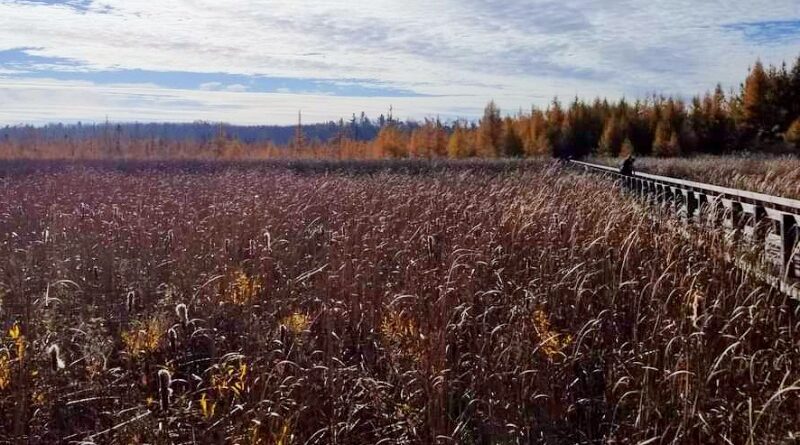DND Confirms Presence of Unexploded WWII Bombs Near Ottawa Hiking Trails
The Department of National Defence (DND) has confirmed the presence of unexploded World War II bombs in the depths of Mer Bleue Bog, a well-known destination for hiking and skiing in Ottawa’s east end.
A DND spokesperson told The Epoch Times the bombs are buried beneath roughly 865 hectares of terrain predominantly composed of peat bog. The area was used as a practise bombing range from 1942 to 1945 and is now part of a 3,500-hectare conservation area owned and operated by the National Capital Commission (NCC).
The types of munitions dropped in the area included aerial bombs of up to 1,000 pounds (roughly 450 kilograms).
A bomb disposal team was tasked with cleaning up the range in 1960, but the area was never cleared of explosives “due to the nature of the terrain,” the DND spokesperson said in an email.
The NCC agreed to purchase the land from the defence department in April 1965 despite the presence of the bombs.
DND said the unexploded ordnances (UXO) risk at the Mer Bleue bog has been assessed as low because the impact area is in the bog, ensuring minimal to no human contact.
“As long as this area is maintained as Parkland, the UXO Risk will remain low,” the spokesperson said.
While DND knows where the UXOs were dropped, it does not know the exact number of bombs that remain buried in the bog.
The aerial photo below shows the former bombing range’s target area and the small red crosses correspond to impact craters.

This map supplied by DND illustrates the target zones of the former Mer Bleue Bog bombing range. The red crosses represent the locations of impact craters at the site.. Department of National Defence
“The site’s UXO status does not impact public use of the boardwalks, hiking/ski trails, or any of the other public areas,” DND said. “The historic bomb impact areas are deep within the bog away from any of the public use areas.”
The conservation area offers more than 20 kilometres of trails for hiking, cross-country skiing, and snowshoeing. The Mer Bleue Bog Trail is the parkland’s most popular because of its wooden boardwalk, the NCC said. Parking and use of the trails are free year-round.
No construction is planned for the site at present but, if that were to change in the future, UXO experts would need to be called in, the DND said.
“Should some kind of development be envisaged in the actual former range’s impact area, qualified UXO expertise will be required to ensure any and all physical works are undertaken in a manner that ensures the health and safety of the public,” the ministry noted.





